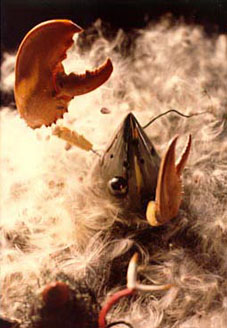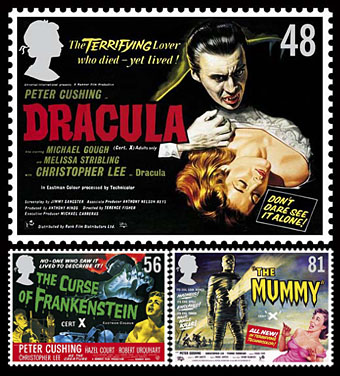
A Babobilicon.
Daina Krumins’ Babobilicons is a truly surrealist work in terms of both its process and product. Krumins takes time to make her films. It took her nine years to create this remarkable animated short, yet her method is in line with the surrealist affinity for chance operation. She cultivated slime molds on Quaker five-minute oats in her basement, planted hundreds of phallic stinkhorn mushrooms, and put her mother behind the camera to film them growing. The results are sexual and bizarre. She combined ordinary objects—wallsockets, candles, and peeling paint—to get unnerving, dreamlike images. Porcelain fish jump through waves; mushroom erections rise and fall. Her Babobilicons—robotlike characters that resemble coffee pots with lobster claws—move through all this with mysterious determination. Anyone who order 10,000 ladybugs from a pest control company to film them crawling over a model drawing room definite possesses a sense of the surreal. Renee Shafransky, The Village Voice
So now tell me you’re not intrigued…. I’ve seen Daina Krumins’ earlier film, The Divine Miracle (1973), a strange procession of religious imagery inspired in part by the kitsch of Christian postcard art. I haven’t seen Babobilicons (1982) unfortunately, but if the singular atmosphere conjured by the earlier work is anything to go by it should be quite something. There’s also a later Krumins’ film which seems equally surreal, Summer Light (2001), about which this NYT appraisal says “Giant milkweeds float about the landscape, babies play with fiery leaves and deer antlers jump out of water like salmon.”
Read more about the films here and here, including details of how to buy them on VHS. Surely a DVD release is overdue?
Previously on { feuilleton }
• Mushrooms on the Moon
• Impressions de la Haute Mongolie




